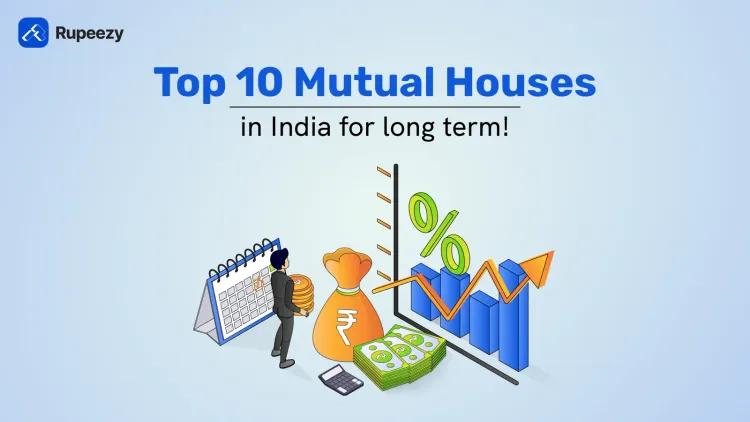What is Mid Cap Fund? Features, Advantages and Top Picks


00:00 / 00:00
When it comes to investing in mutual funds, there are so many options available. Starting from equity to debt, there is a fund for the risk and return appetite of every investor. But for those who are looking for a smart choice that offers balanced growth, the mid cap funds are the best option.
But what is mid cap fund? In simple words, it is a fund that invests in mid-sized companies which are still in their growth stage. These are the companies with high potential and can offer better returns in the long run. At the same time, these are less risky as well.
But is that it? Well, to make the right decision, there are some more insights that you must know. So, read this guide to know the mid cap fund meaning and what makes them different.
Understanding Mid Cap Funds
A mid cap fund is a type of mutual fund that invests mainly in mid-sized companies. These companies are ranked between 101 and 250 by market capitalization. Mid cap funds focus on firms which are established but still have room to grow.
They aim to grow your money by tapping into this potential. Mid cap funds usually offer higher returns than large cap funds while being less risky than small cap funds. This makes them a good option for investors seeking balanced growth.
Features of Mid Cap Funds
Mid cap funds come with several features that make them a preferred choice for many investors. Before you decide to invest, it is important to know what makes these funds different from large cap or small cap funds.
1. Focus on Mid-Sized Companies
Mid cap funds invest mainly in companies ranked from 101 to 250 by market capitalization. These firms are neither too large nor too small, making them ideal for investors seeking balanced growth.
2. Good Growth Potential
The companies included in these funds are usually in their growth phase. They have moved past the early risky stages and are now expanding, which can result in better returns over time.
3. Moderate Risk Level
Mid cap mutual funds include a balance of risk and return. They carry a higher risk than large cap funds but are generally less risky than small cap funds, making them suitable for investors with a moderate risk appetite.
4. Professional Management
These funds are managed by experienced professionals who analyse market trends and company performance to select the best stocks for the fund.
5. Diversification Benefits
Mid cap funds invest in different sectors and companies. This diversification helps reduce the impact of any single company’s poor performance on your overall investment.
How Do Mid Cap Funds Work?
Understanding how mid cap funds work can help you make better investment decisions. These funds follow a simple yet effective process to grow your money.
Pooling Money from Investors: Mid cap funds collect money from many investors. This creates a large pool of funds that can be invested in different mid-sized companies.
Investing in Mid-Sized Companies: The fund manager invests this pooled money mainly in companies ranked between 101 and 250 by market capitalization. These firms are stable but still have the potential to grow further.
Active Fund Management: Professional fund managers research, analyse, and select the best mid cap stocks. They keep a close watch on market trends and company performance to make buying or selling decisions.
Returns Based on Company Performance: Your returns depend on how these mid cap companies perform in the market. If they grow and perform well, the value of your investment increases, giving you higher returns.
Balancing Risk and Growth: These funds aim to balance risk and growth by investing in companies that are not too risky like small caps but have better growth potential than large caps.
Top Mid Cap Funds in India
To help you understand mid cap funds better, here are some of the top-performing mid cap mutual funds. This table shows top mid cap fund examples that you can plan to invest in.
Fund Name | AUM (Rs. Cr) | 1 Year Return (%) | 5 Year Return (%) |
6,641.11 | 16.6 | 32.05 | |
30,401.09 | 8.08 | 37.44 | |
10,027.89 | 9.58 | 34.79 | |
79,717.67 | 8.41 | 33.16 | |
36,836.07 | 6.39 | 33.33 |
The data is as of 9 July 2025.
These funds have delivered stable growth over the years. However, remember that past performance does not guarantee future returns. Always choose funds based on your risk profile and investment goals.
Advantages of Mid Cap Funds
Mid cap funds offer many benefits for investors. Knowing these advantages can help you decide if they fit your financial goals.
1. High Growth Potential
Mid cap funds invest in companies that are still growing. These firms have moved past the initial risky stages and are now expanding. This growth phase often leads to higher returns for investors over the long term.
2. Balanced Risk and Return
These funds carry a moderate level of risk. While they are riskier than large cap funds, they are more stable than small cap funds. This balance makes them ideal for investors who want better returns without taking very high risks.
3. Diversification Benefits
Mid cap mutual funds invest across different sectors and companies. This diversification spreads out your risk. If one company does not perform well, it does not affect your entire investment significantly.
4. Professional Management
These funds are managed by experts who closely analyse market trends and company performance. They choose the best mid cap stocks to maximise returns while managing risks effectively.
5. Potential to Beat Large Caps
In favourable market conditions, mid cap funds often outperform large cap funds. This gives investors an opportunity to grow their wealth faster compared to investing only in large cap funds.
Risks of Mid Cap Funds
While mid cap funds offer many benefits, it is important to understand the risks before investing. Knowing these risks will help you make informed decisions.
1. Higher Market Volatility
Mid cap funds are more sensitive to market changes compared to large cap funds. Their prices can rise or fall sharply within short periods, making them less stable during uncertain market conditions.
2. Liquidity Challenges
Mid-sized companies may not always have high trading volumes in the market. This means the fund manager might face difficulty selling these shares quickly without affecting their prices, especially during market stress.
3. Business Performance Risk
Mid cap funds invest in companies that are still growing. If these companies face management issues, tough competition, or a decline in demand, it can impact their stock prices and your returns.
4. Impact During Economic Slowdowns
During economic downturns, mid cap companies often get affected more than large cap firms. Their growth plans may slow down, leading to lower returns for the investors.
5. Greater Risk Compared to Large Cap Funds
Although mid cap funds are less risky than small cap funds, they still carry higher risk than large cap funds. Investors must be prepared for these risks if they choose mid cap funds for better growth potential.
Who Should Invest in Mid Cap Funds
Mid cap funds are not suitable for everyone. Knowing who should invest in these funds can help you decide if they match your financial goals.
1. Investors Seeking Higher Growth
If you want better returns than what large cap funds offer and are ready to take moderate risk, mid cap funds can be a good choice. They give you a chance to benefit from the growth of mid-sized companies.
2. Those with a Medium to Long-Term Horizon
Mid cap funds work best when you stay invested for at least 5-7 years. This gives the companies enough time to grow and helps your investment recover from short-term market ups and downs.
3. Investors with Moderate Risk Appetite
These funds carry more risk than large cap funds but are safer than small cap funds. If you can handle moderate market fluctuations for better growth, mid cap mutual funds are suitable for you.
4. People Looking to Diversify Their Portfolio
Adding mid cap funds to your investment portfolio brings diversification. It spreads your investments across different types of companies, reducing overall risk.
5. Investors Comfortable with Volatility
If you are not worried by short-term price changes and can stay invested patiently, you can consider mid cap funds to build wealth over time.
How to Select Mid Cap Funds
Selecting the right mid cap fund can help you achieve your investment goals efficiently. Here are some key points to keep in mind while making your choice.
1. Assess Past Performance
Check how the fund has performed over the last 3 to 5 years. Consistent returns during both good and bad market phases show that the fund is managed well and can handle volatility effectively.
2. Check Fund Manager’s Expertise
The experience and skills of the fund manager play a big role in the fund’s success. Look for funds managed by professionals with a strong track record in managing mid cap portfolios.
3. Analyse Expense Ratio
The expense ratio shows the cost of managing the fund. Lower expense ratios are better as they reduce your investment cost and help you earn slightly higher returns over time.
4. Review Portfolio Composition
See which sectors and companies the fund invests in. A well-diversified fund spreads its investments across different sectors, reducing risks related to any one industry or company.
5. Match with Your Risk Profile
Understand your own risk-taking ability. Mid cap mutual funds include higher risk compared to large cap funds. Choose a fund only if you are comfortable with short-term ups and downs for better long-term growth.
How to Invest in Mid Cap Funds
Investing in mid cap funds is simple and can be done online through registered brokerage firms like Rupeezy. Here are the steps to invest in a mid cap fund:
Step 1: Download the Rupeezy Trading App from the Play Store.
Step 2: Open the app after downloading and complete the necessary KYC compliance process.
Step 3: Once your KYC is verified, log in to your account and tap the ‘Explore’ icon in the bottom navigation menu.
Step 4: Choose the fund category as Equity and select the Mid Cap Fund option.
Step 5: Browse and compare available mid cap funds using the Risk-Return graph to understand their performance.
Step 6: Select the mid cap fund that aligns with your investment goals and risk profile.
Step 7: Choose your preferred investment mode – Lumpsum or SIP (Systematic Investment Plan).
Step 8: Enter your investment amount and complete the payment securely through UPI or Net Banking.
Step 9: Track and manage your mid cap fund investments easily through the Rupeezy App.
Conclusion
Mid cap funds can be a smart addition to your investment portfolio. They offer the right mix of growth and stability by investing in companies that are established yet still growing. While they carry moderate risk, their potential for higher returns makes them a preferred choice for many investors with long-term goals.
If you are looking to build wealth with balanced risk, mid cap mutual funds can be a good fit. Rupeezy makes investing simple and quick. You can explore, compare, and invest in the best mid cap funds right from your phone.
Take your first step towards financial growth today. Download the Rupeezy app and start investing in mid cap funds with ease.
FAQs
1. What are mid cap mutual funds?
Mid cap mutual funds are equity funds that invest mainly in companies ranked between 101 and 250 by market capitalization. These companies are mid-sized, offering a balance between growth potential and stability for investors.
2. Is mid-cap a good investment?
Mid-cap can be a good investment for those seeking higher returns than large caps with moderate risk. However, it is important to match it with your risk appetite and invest for a medium to long-term period.
3. How do mid cap funds differ from small cap funds?
Mid cap funds invest in companies that are larger and more stable than small caps. While small caps carry higher growth potential, they also come with higher risk. Mid caps balance this by offering growth with relatively lower volatility.
4. Can beginners invest in mid cap funds?
Beginners can invest in mid cap funds if they understand the risks and have a long-term investment goal. Starting with SIPs can help manage market volatility and build wealth gradually.
5. Do mid cap funds pay dividends?
Some mid cap funds offer dividend options where gains are paid out at intervals, while others reinvest earnings to grow your investment value. You can choose between growth and dividend options based on your income needs.
The content on this blog is for educational purposes only and should not be considered investment advice. While we strive for accuracy, some information may contain errors or delays in updates.
Mentions of stocks or investment products are solely for informational purposes and do not constitute recommendations. Investors should conduct their own research before making any decisions.
Investing in financial markets are subject to market risks, and past performance does not guarantee future results. It is advisable to consult a qualified financial professional, review official documents, and verify information independently before making investment decisions.

All Category









